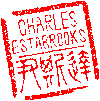Main menu
You are here
Welcome to the Wax Drum
This blog is a mash-up of my technical experience as a web developer, digital photographer, amateur musicologist, gizmologist, geek wannabee, and former software engineer. The origin of the title lies in the history of audio recording.
Recording sound was actually possible as early as 1806, when English physicist Thomas Young recorded the vibrations from a tuning fork onto a rotating wax drum. The drawback he faced, however, was proving conclusively that he'd actually recorded anything, because he had no way of hearing the recording play back. In 1857, Frenchman Leon Scott de Martinville had the same problem when he recorded fluctuations in air pressure onto soot using a rotating drum, a large diaphragm and pig's hair.
The Wax Drum began life as a collection of technical tips & tricks I kept to remind myself of the syntax or procedure for various activities I had to perform on an occasional basis. It has evolved into a repository for computer and networking technical information, digital audio, and related topics.
Since my primary computing platform is an Apple and runs Mac OS X, the blog is inherently X-centric, so to speak. Many of the articles delve into the use of terminal commands and shell scripting, the Apache web server, MySQL, and other tools of my trade as a web developer. Other articles touch on my avocations including photography, music, digital audio & imaging, and occasionally sailing. My hope is that someone else will find the information useful for solving a particular problem. If that someone is you, please leave me a comment!
Disclaimer
This blog is a compilation of tips and techniques rather than a tutorial. As such, it simply contains an arbitrary collection of things that I've found useful and wrote down so that I could refer to them if I forgot. There is no particular organization or sequence, and absolutely no guaranty of accuracy, so use at your own risk. And always remember, confusing, misleading, or otherwise inaccurate information is par for the course.
Charles
Recent blog posts
- iPerf3 LAN Network Bandwith (Speed) Testing
- FFMPEG to Crop Video "Black Bars"
- LibreOffice Convert to Plain Text
- FFMPEG Gamma Correction
- Correct Video Aspect Ratio using FFmpeg
- Create a Disk Image using "dd"
- CodeIgniter Kint and dd()
- Merging m4a (aac) Audio Files
- PicoScope Linux
- MySQL Variables and Slow Queries
